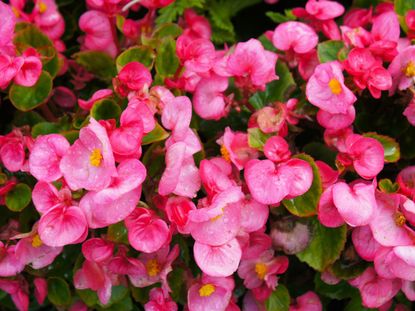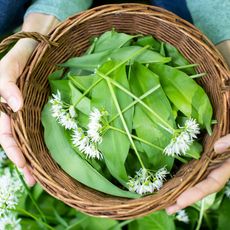How To Propagate Begonias The Right Way, According To Pros
Once you know how to propagate begonias you’ll never want to stop multiplying these beauties for houseplants or outdoor borders and beds.


How To Propagate Begonias Properly, According To Experts
Knowing how to propagate begonias can help you enjoy these well-loved plants in more places and for longer. There are many different ways to propagate plants, but some methods work better than others for specific plants. For begonias, try rooting stems and leaves for the best results.
Best Ways to Propagate Begonias
There are several options for propagating begonia plants. They include stem cuttings, leaf cuttings, seeds, and tuber cuttings. Here are the best methods for creating more begonia plants.
Stem Cuttings
When you learn how to root a begonia from a stem or shoot cutting, you will master one of the best methods for propagating begonias. This is the method of choice for getting a true plant from the parent. It’s also the easiest and most foolproof propagation option.
Take a 4 to 6 inch (10 to 15 cm) stem cutting just below a node. Remove the lower leaves, keeping two or three at the top of the cutting. You can dip the cut end in a rooting hormone to speed the process, but it isn’t necessary.
Prepare a seed tray or small container with drainage holes by filling it with moist potting soil or potting mix. Make a small hole in the mix and place the cutting in it. Press the soil around the cutting so it remains upright.
Keep your cutting in a warm location with good humidity. To keep it moist, you can seal the entire container in a plastic bag or cover it with plastic wrap. You should see the roots form within a few weeks. The plants can then be repotted.
Gardening tips, videos, info and more delivered right to your inbox!
Sign up for the Gardening Know How newsletter today and receive a free download of our DIY eBook "Bring Your Garden Indoors: 13 DIY Projects For Fall And Winter".
Leaf Cuttings
You can propagate any type of begonia with a stem cutting, but only a few types work well with leaf cutting: They are rex, angel wing, and other types with larger leaves. Remove one leaf and treat the cutting as you would a stem cutting.
Seed Propagation
Propagation of begonias by seed takes more time and is more difficult than by cutting. If you have begonia seeds, begin them in January or February to get flowers in summer. Use a good quality seed starting mix. Press seeds into the surface of the moistened mix and add a layer of sphagnum moss over the top.
Cover the seed container with plastic to keep it humid and moist. The seeds will germinate within a few weeks if you can keep the temperature at a constant 70 degrees Fahrenheit (21 Celsius). Use a heating mat under the tray for consistency.
Once you have seedlings, thin them and provide bright light. Transplant larger seedlings to new pots. Place them outdoors only after hardening them off.
Tuber Cuttings
Taking cuttings of tubers is not the best way to propagate begonias because the pieces tend to rot easily. Reserve this method for saving tuberous begonias that have begun to rot. Cut off portions of the tuber that have not rotted and repot to grow a new plant.
When to Propagate Begonias
The best time to propagate begonias by cutting is in spring. Remove healthy new growth for the cutting, and you’ll have plenty of time to get roots and flowers during the growing season. To get flowers for summer by seed, start them in winter.
Frequently Asked Questions
Will Begonia Cuttings Root in Water?
Yes, you can root begonia cuttings in water, but be aware that it may take longer than rooting in soil or potting mix. For the quickest results, use a moist potting mix and rooting hormone.
Can You Propagate a Begonia With Just the Stem?
The best way to propagate a begonia by cutting is to take a stem with two or three leaves on the top and a node at the bottom of the cutting.

Jackie Rhoades began writing for Gardening Know How in 2010.
-
 Elegant Exotics: 8 Beautiful Amaryllis Varieties That Will Brighten Any Holiday Display
Elegant Exotics: 8 Beautiful Amaryllis Varieties That Will Brighten Any Holiday DisplayWhether red, pink, white or variegated, the right amaryllis varieties can enhance any living space, especially during the holidays. We round up eight of the most exquisite
By Bonnie L. Grant
-
 Forage For Herbs: 7 Tasty And Safe Wild Herbs To Pick Close To Your Own Backyard
Forage For Herbs: 7 Tasty And Safe Wild Herbs To Pick Close To Your Own BackyardIn addition to growing your own herbal staples, did you know there are several wild options out there that are safe and tasty – and free? Try foraging these 7 wild herbs
By Amy Grant